Reference Series
PM-10

Overview
Integrated amplifier
 |
Amplifiers are at the core of Marantz history:
its very first product was a high-quality preamplifier designed to make the most of the then-new LP record format. And with a history stretching all the way to that ground-breaking Audio Consolette – which Saul B Marantz started manufacturing in 1952, and which soon became the first real Marantz product, the Model 1 preamplifier – it’s no surprise that the company’s very latest Premium Series model, the PM-10, is an integrated amplifier built to set new standards with all of today’s music formats.
In fact, this massively powerful integrated amplifier is constructed more like a high-end separate preamplifier and a pair of monobloc power amps, but all in one beautifully finished case, designed both to maximise performance and create a strong visual statement.
Making an integrated amplifier with dual monobloc design fitting in a normal size cabinet is made possible by the use of a stereo switching amplifier. Its aim? To reveal the maximum musical involvement from everything from LPs to the latest high-resolution audio files and beyond, and with all the power and control required to drive the most demanding loudspeakers, allowing them to perform at their best.
Optimized Design
To achieve such quality, while still delivering class-leading power, means optimizing each section of the amplifier for its task, just as would be done in a design using a separate preamplifier and monobloc power amps.
Commonly, amplifiers use a single transformer, with separate power supply regulation for the preamplifier and power amplifier sections; the PM-10 takes things much further.
A dual-mono design, it has separate power supplies for the preamplifier and each of the power amplifier channels, with one transformer dedicated to the preamp to ensure the delicate signals passing through that section of the amplifier aren’t affected by the demands of the high power output stages. There’s also a dedicated supply for the microprocessor controlling volume adjustment, input selection and so on, ensuring no noise from the control section finds its way in to the audio path.

Pure Analog
Another important part of the noise-reduction here is the fact that the PM-10 is a purely analog amplifier: many rival designs are today including digital-to-analog conversion, or adopting digital amplification and volume control, but Marantz keeps things as clean and simple as possible with its highly-developed all-analog design.
Why? Well, though it may seem convenient to have a DAC in the amplifier, digital circuitry is, by its very nature, noisy (in the electrical sense) and can interfere with the delicate analog signals passing through the amp. That’s why Marantz chooses to design its Premium Series range with any digital-to-analog conversion in its Super Audio CD or network music players, keeping its amplifiers as pure and clean as possible.
What’s more, to make the most of that purity of design, the PM-10 has also been designed with the option of working in ‘Purest Mode’: when engaged, this deactivates any superfluous circuits, giving the signal the cleanest possible path through the amplifier. There’s also a Power Amp input, taking the signal straight from the input section to the power stage to let the unit work as a pure power amplifier.
Fully Balanced, From Input to Final Power Section
The benefits of balanced audio layout have long been understood: unlike a conventional layout, one half of the signal path is in the ground plane of either an amplifier or a cable, balanced working uses two conductors or paths – one for positive, the other for negative – and an entirely separate ground to protect them.
The benefit in cables is that any external interference will affect both positive and negative conductors, but since the signals they are carrying are the mirror image of each other, they will mutually cancel out any effect – which is why such cables are widely used in pro audio and studio applications, where sources of hum are common, and the longer cable runs involved makes them particularly prone to picking up interference.
The same is true when balanced working is applied to audio circuitry: not only does this mirror-imaging of the layout, in which identical components are handling the positive and negative ‘legs’ of the signal, cancel out any potential interference, it also means any noise or errors introduced in the circuitry will also be canceled out.
An additional benefit is that balanced working also uses stronger signals than unbalanced designs, simple because both halves of the circuit are active – rather than just having one half pushing and the other just providing the ground, here we have a ‘push pull’ operation. And a stronger signal means one less susceptible to any outside interference: the more signal there is, the less obvious any noise will be.
The PM-10 uses a fully balanced layout, from the input section all the way through to the final power amplifier section: it has two sets of balanced inputs, and also conventional unbalanced line-level inputs (plus a high-quality phono stage), the signal from these inputs being converted to balanced working before being passed through the amplifier.
By keeping the signal balanced all the way through the amplifier, and combining that with optimised power supply design, the Marantz engineers are able to achieve maximum noise rejection throughout the audio path, and the highest possible signal purity.
Balanced, Bridged Power Amplification

For the PM-10, Marantz wanted the purest possible sound, plus the power and dynamics to drive and control some of the world’s most demanding speakers. To achieve this, they continued the balanced working found in the preamp stage right the way through to the power amplifier stage to its speaker outputs, and also adopted bridged working to develop the power required while maintaining that balanced design. This True Balanced Concept realizes a ground-free signal management from the input to the output.
What is the bridged amplifier about? In a conventional amplifier, one speaker is driven by the positive and negative part of one single output stage per channel, but a bridged amplifier does things differently, using two separate amplifier stages per channel to drive one speaker. To greatly simplify things: one amp pushes the speaker cones and domes, while the other pulls them back.
That much greater control over the way the speaker drive units behave, in that the amplifier can make them start moving, and stop, much more precisely is very important for definition and the ‘speed’ of the system, meaning it can play music with much better rhythmic and spatial controls, not to mention making voices and instruments sound more realistic.
In the PM-10, the bridged amplifiers in the power output stage – a total of four amplifier channels – allow this control to be combined with huge power output: it delivers 2x200W into an 8ohm load, and can easily cope with demanding speakers or those whose impedance varies widely with frequency, thanks to a 2x400W output into 4ohms.
That ensures not just the power to drive even big, power-hungry speakers to high levels while keeping the sound clean and distortion-free, but also the ‘grip’ to make sure those speakers are doing just what the music demands. It’s all made possible by the use of the latest switching amplifier technology, allowing a compact integrated amplifier design while still fulfilling Marantz performance requirements.
Carefully Selected Components
Marantz has long built a reputation for choosing the best-possible components for its Premium Series products – and if it can’t find what it wants, it designs and builds the required part.
That thinking informed the design of the Hyper Dynamic Amplifier Module (or HDAM): unhappy with the audio quality available from ‘amplifier on a chip’ IC components, the company designed its own alternative, in the form of a miniature amplifier module built entirely of discrete components. As with all such design decisions, the engineers selected and optimised the HDAM through extensive listening in dedicated Marantz facilities in Europe and Japan, and since it was introduced this component has both been developed and also found its way into an ever-wider range of products.

In the PM-10, the latest-generation HDAM SA3 is used, as part of a current feedback topology designed for the widest possible frequency and dynamic ranges – just the thing for today’s ultra-high-resolution audio formats – and aided by ultra-fast custom made block capacitors for the fastest possible response to demands for high current.
The same current feedback design is applied to the phono stage in the PM-10, which is configurable for use with either moving coil or moving magnet cartridges for the best possible playback of those favorite LPs. This isn’t a case of Marantz responding to the current ‘vinyl revival’: over the years, while developing and refining its digital competences, the company has remained totally committed to the excellent sound possible from LPs and singles. It has long been fitting its products with high-quality phono stages – even before vinyl came back into fashion!
Built to Perform
Like the partnering SA-10 Super Audio CD/CD player/DAC, the PM-10 is constructed to the highest possible standards, with a double-layered copper-plated chassis for excellent rejection of mechanical and electrical interference, and casework constructed from thick, heavy, non-magnetic aluminium panels. Both products also sit on aluminum machining feet.
Even the speaker terminals here are special: the highest-aiming rivals tend to use components bought in from third party companies, or designed as much for ‘show’ as ‘go’, but the PM-10 has newly-designed and exclusive Marantz SPKT-100+ terminals, made from high-purity solid copper.
In common with every other design and engineering decision behind this new reference class amplifier, those terminals are there for one very simple reason:
‘Because Music Matters’
SA-10

Overview
SACD/CD Player with USB DAC and Digital Inputs
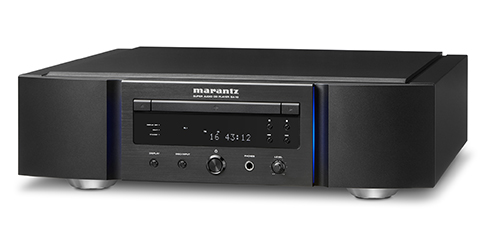 |
The SA-10 is an exceptional player of both CD and SACD discs, but can also play high-resolution music stored on computer-burned discs, as well as being a high-end digital to analog converter for computer-stored music.
The new Marantz SA-10 is the latest model in a range of high-end players stretching all the way back to the dawn of CD: in the original CD-63, launched in 1983, it had the first high-end performance-tuned CD player, and that expertise has continued to be developed over more than 30 years. The SA-10 is designed to sets new standards, whether with music on disc or content streamed from a computer, and to become the New Reference in digital audio.
To achieve that, the SA-10 is a completely new design, drawing on all that experience in making great-sounding players but with virtually every part redesigned. That involved both innovation and some unique thinking, all in the cause of getting the best possible performance across a wide range of digital audio formats. The new model is an exceptional player of both CD and SACD discs, but can also play high-resolution music stored on computer-burned discs, as well as being a high-end digital to analog converter for computer-stored music.
From the unique new disc transport designed for this player all the way through to a complete rethink of the way digital audio data is converted into analog signals, the SA-10 is a ‘clean sheet’ design, the result of painstaking research and development and extensive listening in Marantz’s custom-built listening facilities. That’s symptomatic of the way Marantz has always done things: while it always aims for the most elegant engineering solution, the listening test is always the final arbiter. It’s all to do with that simple phrase running through the heart of everything the company does: ‘Because Music Matters’.
It Starts with the Disc

Whether playing SA-CD or CD, or data discs containing music, it’s vital that any player retrieves the information as accurately as possible: unlike a computer reading a disc for ripping, there’s no time for repeated re-scans when playing music – it happens in real time, so the disc transport needs to get things right first time.
Many modern CD and SACD players use computer-style DVD or ‘universal’ disc drives, simply because it’s increasingly difficult for manufacturers to source dedicated ‘music drives’, purely designed for SACD/CD playback.
The Marantz solution? If you can’t buy it off the shelf, design it and have it made: at the heart of the SA-10 is an all-new SACD-M3 transport mechanism, engineered solely for the best possible performance when playing SA-CDs, CDs and music stored on data discs.
Not only does this new mechanism promise the very best sound quality from conventional CD and SA-CD discs, its extended ability with the playback of music files stored on DVD-ROM discs makes it possible for users to create their own high-resolution audio compilation discs using a computer DVD burner. The SA-10 can play FLAC files from 44.1kHz to 192kHz at up to 24-bit resolution, and DSD2.8MHz and DSD 5.6MHz, well as ALAC (Apple Lossless), AIFF and MP3 files. That means making and playing hi-res disc compilations is now just as simple as it’s always been to make such discs in CD quality.
CDs, SA-CDs and Beyond
However, the SA-10 goes so much further than just disc playback: it’s also a fully-functional digital-to-analog converter for music stored on a home computer, as well as having conventional digital inputs for existing source components.
Those conventional inputs – optical and coaxial – can handle files at up to 192kHz/24bit, but in addition the player’s digital input section includes a USB-B asynchronous input for the direct connection of a computer, and this is compatible with PCM and DXD music files at up to 384kHz/32bit, as well as DSD2.8MHz, DSD5.6MHz and DSD11.2MHz.
That means the SA-10 is not only equipped to handle all the commonly-available high-resolution audio formats now sold by online retailers, but also the ultra-high-resolution files becoming available from a number of specialist labels and outlets. In other words, the new player is entirely futureproof.
What’s more, the digital input section is completely isolated, to avoid any electrical noise from connected components – a particular problem when computers are used as a source – from finding its way into the signal-path.

More than just a DAC
CD players (and indeed amplifiers) with built-in DACs usable for computer audio are nothing new, and neither is DSD capability on such devices. Indeed, the Marantz range already has several CD/SA-CD models so equipped.
However, the SA-10 takes things further – just as it features an all-new disc transport mechanism, so the digital to analog conversion has also been subject to a radical rethink, taking full advantage of the 1-bit conversion technology found in past flagship Marantz players, and incorporating brand-new filtering and upconversion to take advantage of this simple, but elegant solution.
Marantz Musical Mastering:
MMM-Stream and MMM-Conversion
DSD is at the heart of the way the SA-10 handles digital audio: PCM and DXD inputs are all upconverted to DSD at 11.2MHz using the proprietary MMM-Stream converter within the player, and then the high-frequency signal produced is processed by the unique MMM-Conversion stage, used in place of a conventional DAC, to produce the analog output.
The MMM-Stream section of the process replaces the oversampling filters normally used in digital to analog conversion, and allows the implementation of the Marantz Musical Mastering filtering. These filters – one providing a slow roll-off and very short impulse response, the other offering the option of a medium roll-off with short pre-ringing and longer post-ringing – are essentially the same as those found in the Marantz SA-11 disc player and NA-11 network music player, but here they’re implemented at a much higher oversampling rate, thanks to that upconversion to DSD11.2.
In fact, two system clocks are used, to ensure the most accurate upconversion of the incoming signal, whether its from disc or the digital inputs: the 44.1kHz of CD, and its multiples – 88.2kHz, 176.4kHz and so on – are upsampled to 11.2896MHz, while 48kHz and its multiples are taken up to 12.288MHz. This is done for maximum precision, and to avoid any need for sample rate conversion of the kind were the system to have to convert, say, 192kHz audio to DSD12.2MHz.
In addition, all of this conversion is now done in Digital Signal Processing with 32-bit floating-point precision, rather than the 24-bit integer method used in such systems in the past.

Combining this with the reduction to a 1-bit signal straight after the oversampling filter and Sigma Delta Modulation allows a pure DSD-standard signal to be passed to the conversion section in the form of a very high-frequency stream of pulses, requiring only a very high-quality low-pass filter to remove all the superfluous high frequencies and pass the purest possible audio to the player’s output stage.
So why develop all this in-house? The Marantz engineering team says that, as ever, extensive listening sessions gave the reasons: We found big sound quality differences when PCM signals got converted to DSD outside of a conventional DAC and then fed to the DSD input of the conventional DAC. The conclusion of our finding was that for best sound quality we have to do the conversion ourselves.
“This experience led us to evaluate all kind of SDM structures and optimise this to achieve the best sound quality.”
The same thinking informed the design of the DSD-to-analog filter itself, which feeds into the familiar Marantz HDAM (Hyper Dynamic Amplifier Modules) in the output stage, here used in dual-differential configuration for optimal sound quality.

In the same way, even the headphone output on the player is optimized: like the HDAMs, it’s built entirely from discrete components, rather than using simpler ‘amp on a chip’ technology, for the very best sound quality.
Built to Perform
Like the partnering PM-10 integrated amplifier, the SA-10 is constructed to the highest possible standards, with a double-layered copper-plated chassis for excellent rejection of mechanical and electrical interference, and casework constructed from thick non-magnetic aluminium panels and 5mm thick top lid. Both products also sit on aluminium machining feet.
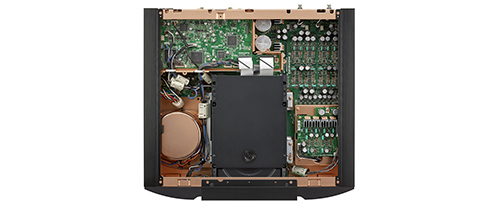
That may all seem very complex, as well as making it clear just how much work has gone into the design of this player, but in essence at the heart of the SA-10 is a digital-to-analog solution that’s as elegant as it is innovative, and developed by the Marantz engineering team for one very simple reason:
‘Because Music Matters’
PM-14S1
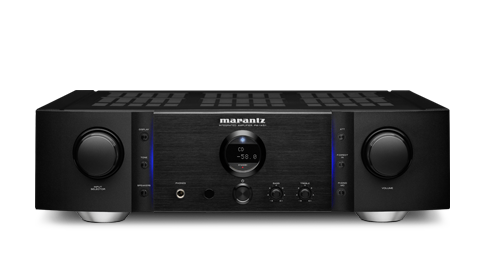
Overview
PM-14S1
 |
Featuring the best of our analog audio technologies, the PM-14S1 integrated amplifier
provides reference class sonic performance along with the ability to handle the
widest range of sources. There are multiple analog inputs and outputs, including
a high quality phono processor that can accept moving magnet and moving coil signals,
analog input signals remain in the analog domain all the way through to the headphone
and speaker outputs. The power amplifier section delivers 90 watts per channel into
8 ohms, and 140 watts per channel into 4 ohms, and the power supply features a massive
650 VA toroidal powertransformer with oxygen free copper secondary windings, as
well as high speed, high current Schottky Barrier Diodes in the rectifier stage.
Our exclusive HDAM (Hyper Dynamic Amplifier Module) technologies are employed throughout,
including the phono processor, line stages, power amplifier stages and the headphone
output circuit. The elegant remote control can also control the matching SA-14S1
SACD player.
Marantz HDAM Technology
Featuring discrete circuit components, as opposed to an integrated circuit, our
exclusive HDAM technology preserves analog signal purity, delivering wide band audio
with expansive dynamic range along with an inaudible noise floor. A total of 24
HDAM SA2 and SA3 units are employed in the phono, line level, headphone output,
pre-amp and power amp stages.
 |
Fully Discrete High Current Amplifier Stages
For compatibility with the widest range of speaker impedances, the power amplifier
stages feature high current power output devices, and for maximum channel separation,
each amplifier stage features segregated circuitry along with individual massive
extruded aluminum alloy heat sinks with a large effective radiating area that provide
fan-less and noise-less heat dissipation. The amplifier is rated at 90 watts per
channel into 8 ohms and 140 watts per channel into 4 ohms, assuring high stability
and wide dynamic range, even with lower impedance speakers.
 |
Multiple Analog Inputs and Outputs
In addition to the phono and CD analog inputs, there are two additional line level
inputs, and two pairs of recorder input/output jacks that together let you connect
multiple sources and recorders. There’s also a power amp direct input that lets
you use the PM-14S1 as a standalone stereo power amplifier for additional system
configuration versatility, along with stereo pre-amp outputs that let you connect
the PM-14S1 to an external power amplifier
Dedicated Headphone Output
Employing our exclusive HDAM discrete modules, the headphone circuit delivers superb
audio fidelity with the widest range of headphone types and impedances, including
low impedance headphones.
 |
Gold Plated Connectors
The analog inputs and outputs connectors are gold plated for optimum signal transfer
and long term stability.
Source Direct Mode
For the purest audio fidelity, the PM-14S1 is equipped with Source Direct function,
which bypasses unneeded audio circuits for the most straight-through signal path.
System Remote Control
The elegant remote control can also be used to control the matching SA-14S1 disc
player, and the PM-14S1 features remote control input and output jacks for additional
remote control configuration flexibility.
SA-14S1
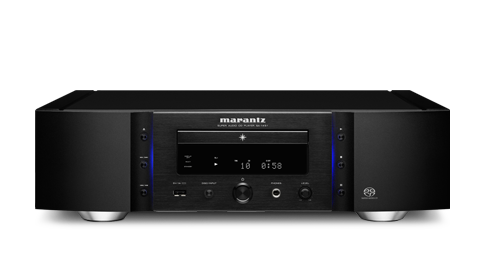
Overview
SA-14S1
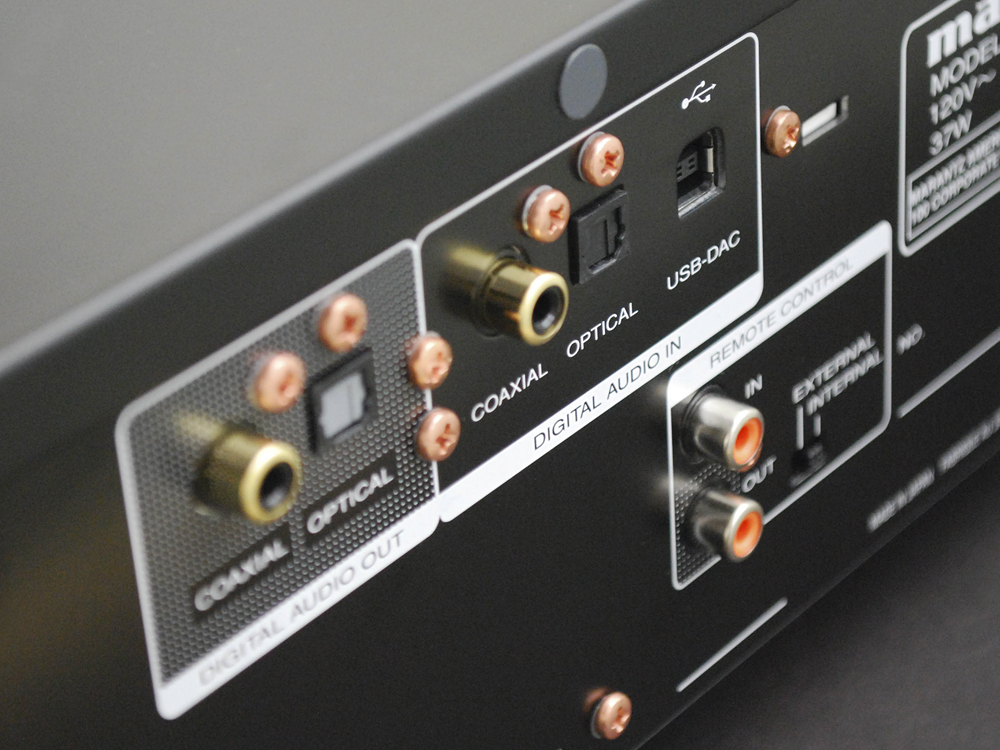 |
The SA-14S1 delivers superb musicality along with the ability to handle a broad
range of disc types as well as decoding high resolution audio files from a computer.
It’s also compatible with the iPod, iPod touch and the iPhone, so you can connect
your device directly to the convenient front panel USB port and enjoy pure digital
transfer for optimum fidelity. The rugged chassis features our latest center mount
disc drive mechanism, mounted onto its own sub-chassis to minimize vibrations, and
the disc tray is constructed of highly rigid glass fiber reinforced plastic composite
for operational stability and reliability. Our exclusive HDAM (Hyper Dynamic Amplifier
Module) technologies ensure top fidelity along with wide bandwidth, and the SA-14S1
incorporates HDAM and HDAM SA2 devices. In addition to playback of CD, CD-R and
CD-RW discs, the SA-14S1 also plays Super Audio CDs, and can playback multi-channel
Super Audio CDs in stereo via the built-in downmixing function. The elegant remote
control can also control the matching PM-14S1 reference grade digital integrated
amplifier.
Marantz HDAM Technology
Compared to other disc players that employ multiple op-amp ICs, the SA-14S1 features
our exclusive HDAM technology that employs dedicated modules featuring discrete
components that together deliver wide dynamic range and fast slew rate for true
wideband response.
High Current Power Supply
The power supply features a large high current toroidal power transformer that features
OFC (oxygen free copper) secondary windings, along with high speed, high current
Shottky Barrier Diodes in the rectifier stage for the purest DC voltage output.
Reference Class D/A Conversion
In order to handle the widest range of disc and audio file types, the SA-14S1 incorporates the reference class DSD1972A digital-to-analog converter, which provides up to 192 kHz/24 bit resolution, along with DSD decoding with Super Audio CDs. Two prevent interference between the various stages, the power supply, digital audio stage and analog audio stages each feature their own individual circuit boards. A variety of disc and file types are supported including music CDs and Super Audio CDs, as well as linear PCM, AAC, MP3 and WAV file types. Via the rear panel USB-B port, you can connect your computer and enjoy linear PCM decoding as well as DSD (direct stream digital) decoding via bitstream or DoP (DSD over PCM).
Expanded Connectivity
Along with the analog stereo outputs, there are also digital and coaxial outputs
for connection to an external digital decoder or amplifier, and the SA-14S1 is also
equipped with optical and coaxial inputs that allow you to use the player as a standalone
digital audio convertor. There are remote control input and output jacks that let
you connect the SA-14S1 to other compatible Marantz components, and an internal/external
switch on the rear panel provides additional system control flexibility.
 |
Convenient Front USB-A Port
Conveniently located on the front panel, the USB port lets you connect your favorite
portable audio device as well as USB media, and the port features compatibility
with the iPod, iPod touch and the iPhone which lets you enjoy direct digital connection
for the utmost audio fidelity.
System Remote Control
The elegant remote control features an intuitive ergonomic layout, and is equipped
with amplifier control functions that let you use a single remote control to operate
the SA-14S1 and the matching PM-14S1 reference class integrated stereo amplifier.
 |
Low Noise Fluorescent Display
The deluxe low noise fluorescent display features clear, easy to read alpha-numeric
characters and is compatible with CD Text encoded music discs. There’s a display
control button on the remote control that lets you dim the display or even turn
it off if you wish.
Dedicated Headphone Output
Connect your favorite headphones directly to the convenient front panel headphone
jack, which also features its own variable volume control. The headphone circuit
is designed to be compatible with the widest range of headphone types, and is compatible
with lower impedance headphones as well.
NA-11S1

Overview
 |
Open up a new world of exciting audio content with the NA-11S1 reference-class Network Audio Player and DAC, which includes a host of internet streaming and device connectivity options. Equipped with exclusive Marantz technologies, including the use of multiple HDAM (Hyper Dynamic Amplifier Module) devices, the NA-11S1 includes connectivity to a range of portable devices and it also includes PC connectivity, all easily controlled with the supplied remote as well as with your iOS or Android smartphone, thanks to the available Marantz Remote App.
 |
Listen to Computer, Web-based and Portable Digital Media
Equipped with an RJ-45 LAN port, you can connect the NA-11S1 to your home network to access thousands of internet radio stations and music streaming via Pandora, SiriusXM and Spotify. There’s a front panel USB type A port that lets you connect your portable device directly, and it features automatic iPod detection and charging, even during standby mode. The USB type B port on the rear panel lets you connect a PC directly, and our newly developed Ground/Signal isolator technology helps to reduce PC noise for the highest quality sound.
Via AirPlay and your wireless home network, you can stream content from your iTunes library directly to the NA-11S1, and you can also access your iTunes content with the direct PC connection.
 |
A host of Marantz digital technologies combine to deliver the ultimate audio experience. The NA-11S1 is equipped with dual master audio clock generators with jitter reduction for numerous sampling frequencies and bit depths, up to 192 kHz/24 bits. A number of audio file types are supported, including WAV, WMA, MP3, MPEG-4 AAC, FLAC and ALAC, as well as DSD over PCM.
Multiple Filters Offer Versatile Listening Options
The latest Marantz DSP processor (DSP PEC777f3) provides precision digital filtering, and the NA-11S1 offers a number of DSP modes that let you tailor the sound to your liking. There are two for digital sources, as well as the option of noise shaping and a DC filter with a 1.7 Hz cutoff.
 |
Exclusive Output Technology Ensures Faithful Playback
For optimum audio fidelity, the NA-11S1 features high current, high resolution audiophile D/A converters, operating in differential mode for the lowest noise and widest dynamic range. The critical post-D/A current-to-voltage conversion is handled by the latest Marantz HDAM-SA2 devices, which feature precision discrete components in lieu of standard op amp chips. The final analog output stage features additional HDAM devices, and there are two output choices – unbalanced (RCA) and balanced (XLR). The balanced outputs also feature a phase-inversion option for compatibility with any XLR-equipped pre-amp.
 |
Multiple Ports for Versatile Connectivity
Dual (optical and coaxial) outputs are provided for connection to other components, and there are also dual digital inputs that let you use the NA-11S1 as a DAC with other digital audio sources. There’s also a high-quality dedicated headphone amplifier, which features its own output stage that’s also equipped with HDAM-SA2 devices along with a precision variable analog volume control.
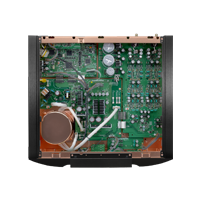 |
Rugged, Durable Construction
As befits its reference-class status, the NA-11S1 features a rugged chassis with internal copper-plated surfaces. The thick 5mm top panel can easily support the weight of an additional component, and the dual-layer bottom plate and die-cast aluminum cabinet feet provide solid rigidity along with additional resistance from external vibrations. The beefy power supply features a high current toroidal power transformer with multiple oxygen free copper (OFC) secondary windings, and is housed in a copper-plated enclosure for maximum shielding. Multiple separate circuit boards ensure minimal interference between the various analog and digital stages.
 |
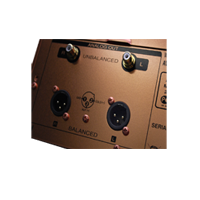 |
TT-15S1

Feactures
| Motor | Non Servo AC Motor |
| Drive System | Belt Drive (Silicon Belt) |
| Operation | Manual |
| Speed | 33 1/3 & 45 rpm |
| Stylus | MM (moving Magnet) |
Inputs/Outputs
| Line output | 2 channel |
Specifications
| Speed variation | +/- 0.2% |
| Rated output (1kHZ, 5m/s) | 3.6mV |
| Freq. Response (Digital Audio) | 20Hz – 20kHz |
| S/N MM/MC | 80dB/- |
| Channel separation | >30dB |
General
| Color | Transparent White |
| Platter height | 1.2″ |
| Power Consumption | 5W |
| Dimensions W x H x D (Inchs) | 16.5″ x 5.4″ x 14.2″ (w/o Tonearm) |
| Weight (lbs) | 19.6lbs (w/o Tonearm & motor) |


